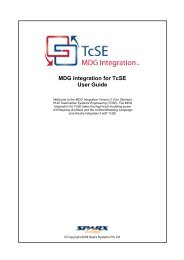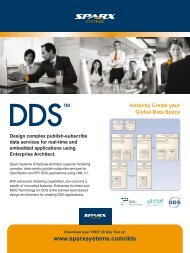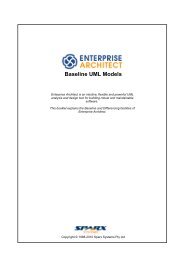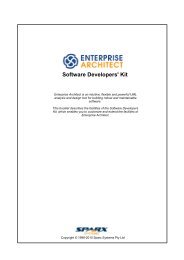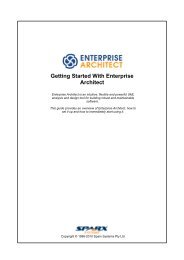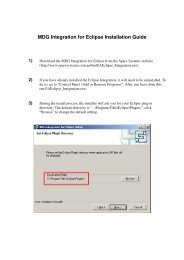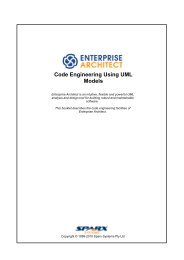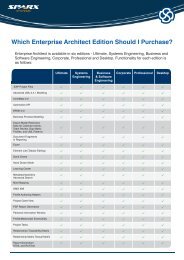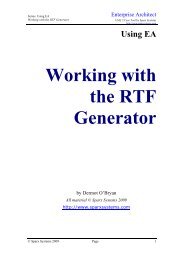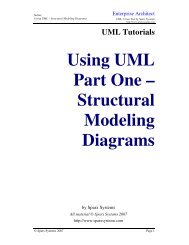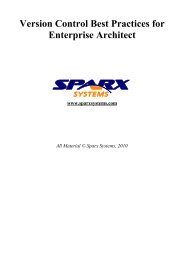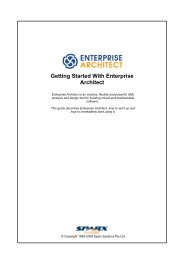Embedded Systems Development using SysML - Enterprise Architect
Embedded Systems Development using SysML - Enterprise Architect
Embedded Systems Development using SysML - Enterprise Architect
Create successful ePaper yourself
Turn your PDF publications into a flip-book with our unique Google optimized e-Paper software.
Figure 7 shows the internals of the Processing Subsystem. As you can see, the CPU<br />
connects to a Memory Unit and a Codec/Amplifier.<br />
ibd Processing Subsystem<br />
cpu : Processor -<br />
TMS320VC5507<br />
cpu-mem<br />
mem : Memory -<br />
MT42L32M64D2KH-25<br />
codec-mem<br />
cpu-codec<br />
codec : Codec with<br />
Amplifier -<br />
TLV320AIC3107<br />
Figure 7 – Audio Player Processing Subsytem Block Internals<br />
Define Ports<br />
The final step in our Roadmap for Modeling Structure is to define the Ports. Figure 8<br />
illustrates data flow between the User Interface, Processing Subsystem, Transport<br />
Subsystem, and the USB and RS-232 connectors on the Audio Player.<br />
ibd Data Flow Definition<br />
rstr : RS232<br />
utr : USB - PL-2528<br />
«flowPort» sData :<br />
FS_RS232<br />
tr : Transport Subsystem<br />
«flowPort»<br />
uData :FS_USB<br />
«flowPort»<br />
inst :FS_Data<br />
«flowPort»<br />
data :FS_Data<br />
proc : Processing Subsystem<br />
«flowPort»<br />
inst :FS_Data<br />
ui : User Interface<br />
Figure 8 – Audio Player Dataflow between Subsystems<br />
Figure 8 illustrates a type of Port called a flowPort. The <strong>SysML</strong> flowPort is typed by a<br />
FlowSpecification which describes the properties and behavior associated with the port.




